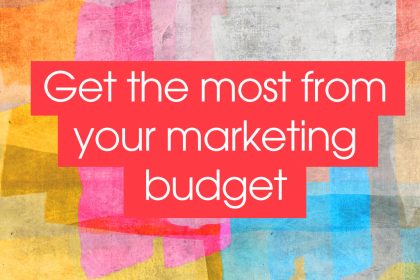How to create a marketing persona for your buyers
Do you have marketing personas for your ideal customers? Find out why business personas are so important, and how you can create them for your buyers.
It doesn’t matter how big your marketing budget is – if you don’t know exactly who you’re talking to, what they want and where they are, it’s not going to deliver the results you need. Jo-Ann Hamilton from SecretBirds explains why you need marketing personas.
How well do you know your ideal customer?
What does your ideal customer do for a living? Why do they buy from you? What behaviours are they driven by? Are you servicing all of their needs or just some? And do you need to?
If you found yourself struggling to answer any of these questions, then you’ll find it hard to create marketing strategies to reach and convince them. But the good news is that learning more about your ideal customer is much easier than you may think right now. You just need to know how to do it – and one powerful way is to create marketing personas.
What is a marketing or buyer persona?
In very basic terms, marketing personas are a profile of your ideal customers or buyers – their habits, needs, responsibilities and favourite resources.
A persona boils down a segment of your target audience into a single person. So you can easily picture and get to know them, and have a much clearer idea of where to find them and how to talk to them.
Most businesses have more than one marketing persona. For example, if you’re a florist, your main customer groups may include:
- Businesses who regularly order displays for their lobby or offices.
- Husbands buying bouquets for their wives for events like Valentine’s Day or their anniversary.
- Families ordering wreaths and flowers for funerals.
- Brides looking for bouquets and displays for their weddings.
As you can see, each of these groups is completely unique. Their motivations for buying, and what they are looking for is very different – and as a result you would target your marketing for each group equally differently.
Each of these groups would have a different persona that would help you understand how to talk to and reach them. For example:
- Your persona for businesses may be Sue, a 35-year-old PA to the managing director who loves lilies and spends her lunch break on Facebook.
- Your persona for husbands may be John, a busy, stressed manager. He likes to be reminded to buy via email so he doesn’t get in trouble for forgetting important days.
- Your persona for bereaved families may be Sheila. She was married to her husband for 40 years and is looking for a compassionate, understanding florist who makes suggestions. She looks through the ads in the local paper.
- Your bride persona is Charlotte. Her wedding planner recommended you, and she loves that you’re knowledgeable about the latest bridal trends and can source unusual blooms.
How creating personas help your business
It’s easy to forget that your customers are human beings. By creating personas like the ones above, you can see how much easier it is to picture the people who buy from you, and understand what they want – and know where to promote your business so they can find you.
It also helps you to create offers and even products that will appeal to them, and ensure your approach is always appropriate (you wouldn’t, for example, use the same language for a bride and a bereaved wife).
By defining your different buyers, you start to see customer groups as actual people. Over time you get to know your persona characters so well they’re almost like an old friend. You can even start to think like them, and create powerful marketing that delivers much more cost-effective results.
Use personas to create content your customers want
Personas can also help you to create and share content that your customers will love. Content that you can use on your own website and in your marketing materials, and share on other sites and across social media – helping to influence buyers’ behaviour and build customer loyalty.
So, instead of ‘selling’ to your customer, you can start informing and entertaining them, being more useful, and building a trusted relationship that makes sales easier.
How to create a marketing persona
So, how do you create a marketing or buyer persona? Here’s an overview of the process:
- Research – First gather as much information as you can. Good places to start are your email lists, contact databases, lead capture pages and through interviews. Research online too, to understand where your customer is shopping in your industry.
- Anaylse – Next thoroughly analyse your research. Can you see any themes emerging? Any universal truths that jump out from your research? For example, job titles, location, age, gender… anything that allows you to segment your audience into clear groups.
- Brainstorm – Now for the fun bit. Create rough audience groups, give them a name and start brainstorming any facts you can about them. Based on what you know, imagine who they are and what their life is like, and start to shape an idea of your ideal customer from each group.
- Assess – Finally, look at your personas and see if they feel right. Do you have enough detailed information about them? Do they seem genuine? Do you believe them? Are they distinct groups? Do any cross over? A good number to end up with is between three and five different buyer personas.
Create a marketing persona with these tools
There are also a number of really clever online tools available to help you build your personas. Here are a few we’ve found:
- MakeMyPersona
- personapp
- Streamlyzer
- Up close and persona
Why you also need negative personas
Your marketing budget and time is limited, so it’s important you don’t waste it marketing to people who will never buy from you – or will only buy once. That’s why negative personas are also important.
Just as you need to know how to spot an idea customer, you need to know how to recognise an un-ideal customer and avoid putting your message in front of them.
A negative persona helps you do exactly that. Just as a normal persona profiles the characteristics and habits of people you want to attract, a negative persona does the same thing for the people you want to avoid. So you know what kind of messages and environments to refrain from.
Create your marketing personas today
If you have never sat down and considered your marketing personas, then now is a good time to start!
The better you get to know the people who are buying from you (and the people you want to buy from you) the more powerful your marketing will be in future, and the easier you’ll find it to grow a business you love, selling to the right people.
Jo-Ann A Hamilton, is the founder of SecretBirds, an enterprise, which encourages, supports and empowers girls and women through entrepreneurship.










